Permaculture Support Species in Food Forestry
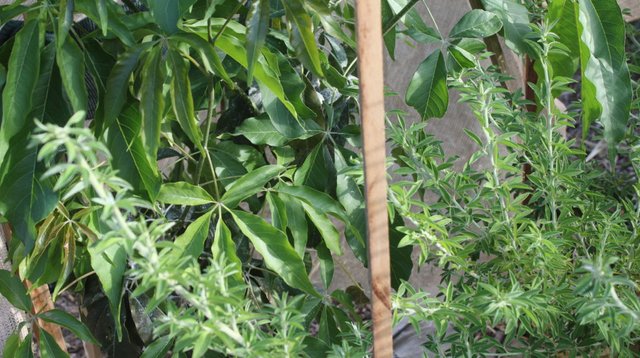
Harnessing the regenerative component in nature.
Forests are complex organisms.
To generate the sophistication present in forest ecology requires a specific process.
The strategic integration of Support Species is crucial in this endeavor.
Support Tree Functions include:
- Growing vigorously (often 10 feet in a single year)
- Withstanding the elements (drought, heat, cold)
- Growing in degraded soils
- Generating soil fertility
- Coppicing/Pollarding when pruned
- Accumulating biomass and mulch
- Regulating sun and wind exposure
- Retaining moisture in the soil
- Increasing humidity in summer
- Harvesting nutrients from the air (Nitrogen Fixation)
- Mining nutrients from deep under the ground
- Stabilizing soil erosion
- De-compacting overgrazed soil
- Attracting and feeding beneficial insect pollinators
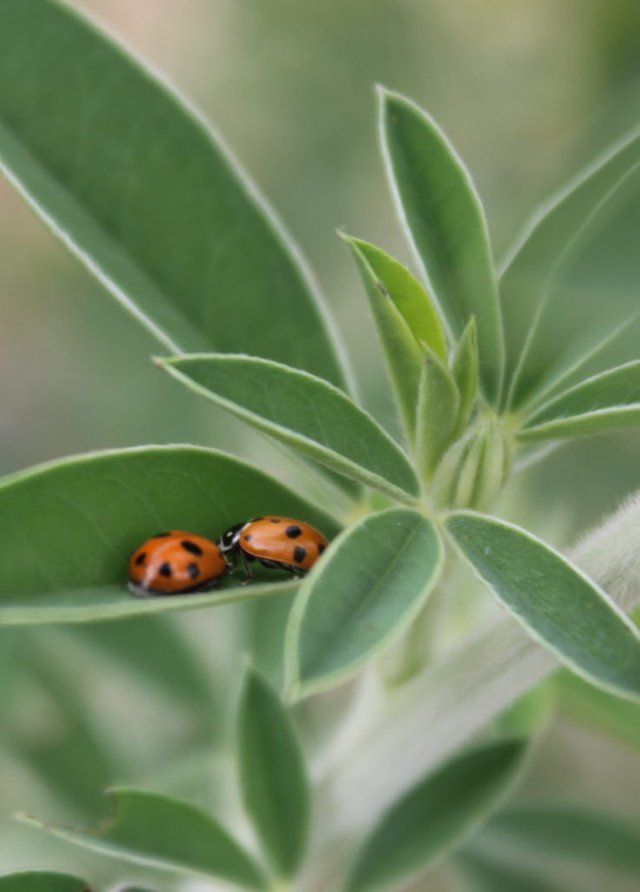
Unlike fruit trees, which often take years to grow tall and require special attention when young, Support Species grow rapidly with little assistance, simultaneously restoring the health and functionality of the overall ecosystem, creating a healthy micro-climate to support the growth of more productive species.
Nitrogen Fixing Support Species -
Nitrogen is vital to all living systems on Earth, and is a key component of many fertilizers, encouraging leaf growth on plants.
Certain plants have the ability to act as fertilizer creating trees through a process known as Nitrogen fixation.
Nitrogen fixation occurs when atmospheric nitrogen is converted to a bio-available form for living organisms to uptake.
Nitrogen Fixing Plants can only fix nitrogen as a result of the symbiotic relationship they share with specific Nitrogen Fixing Bacteria – Rhizobia and Frankia.
These bacteria form colonies on the rootzone. Their function is transforming atmospheric nitrogen (N2) into bio-available forms of Nitrogen (Ammonium NH4 and Nitrate NO3) to encourage the plant to develop. The bacteria then feed off the sugar the plant creates.
The presence of #Rhizobia and Frankia bacteria allows Nitrogen Fixing plants to thrive in degraded soils with very little organic Nitrogen , and thus Nitrogen Fixing Plants are perfect for repairing ecosystems and establishing forests.
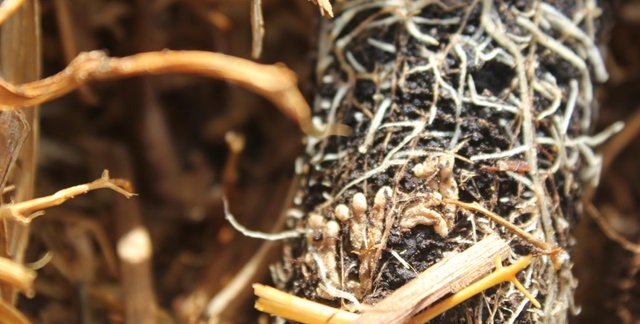
Visible Nodules of Nitrogen Fixing Bacteria on the root-zone of this Tagasaste.
Inoculating Soil -
Rhizobia Bacteria and Mycorrhizal Fungi are micro-organisms that form symbiotic relationships with the roots of plants. Support Species should typically be inoculated with both, as they are complementary.
Necessary Nitrogen Fixing Bacteria and Mycorrhizal Fungi are rarely found natively in the soil, and if they are it is most likely not in any wide spectrum.
This is why Inoculants are vital when introducing new Support Species to your landscape.
Inoculation with both Rhizobia Bacteria and Mycorrhizal Fungi will ensure a healthy and harmonious, immuno-modulatory support system in your forest ecosystem. Through this process you can establish a foundational relationship between your trees and the full complexity of soil life and nutrition.
Related Content:
Nitrogen Fixation and Rhizobia Inoculation
Mycorrhizae – A Living Nutrient Exchange System
Arranging Support Species in Time and Space -
Support species are organized into 4 groups:
- Ground Cover (6 months)
- Short Term (Small Shrubs and Bushes / 1 – 5 years)
- Medium Term (Understory Trees and Bushes/ 5 – 15 years)
- Long Term (Understory and Overstory Trees / Full Term)
Ground Cover species
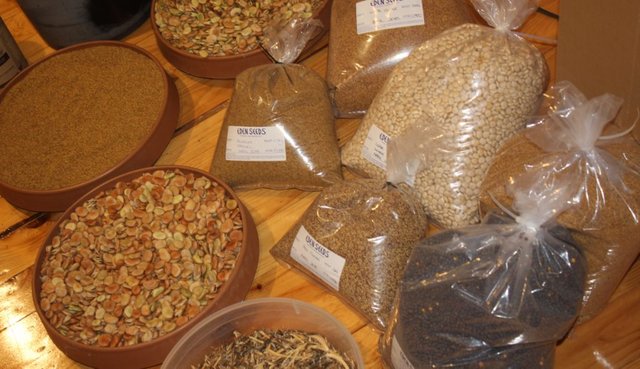
Ground Cover Species live for a single year or less. These are plants that carpet the ground as a living mulch. A living mulch helps protect the soil from harsh sunlight, and also works to suppress unwanted weeds.
The idea with ground cover is to broadcast inoculated Ground Cover Seeds over your soil during rainy seasons, to out-compete and replace the existing weed regime with a weed system that is friendly and beneficial to our needs. These weeds are excellent for activating compost!
Examples Include:
- Clover
- Peas
- Beans
- Vetch
- Lupin
- Fenugreek
- Nettle
- Cowpea
- Medic
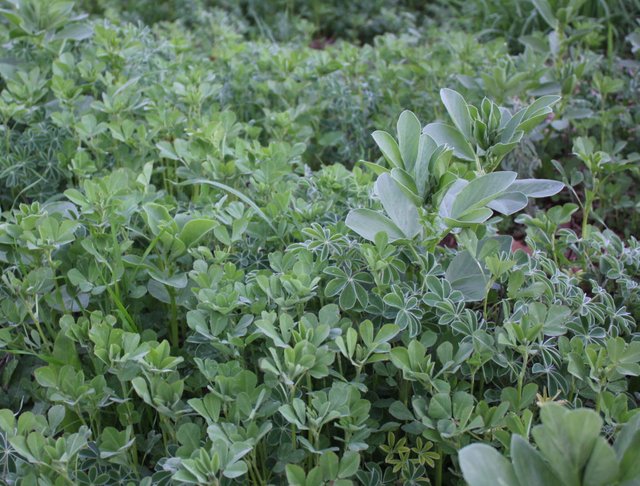
Pictured is a dense carpet of Lupin, Broad Bean, Fenugreek and Clover
Short and Medium Term Species
Short and Medium Term species include shrubs, bushes and trees which either have a short life-span or the intention has been made to remove the tree within this time-frame for strategic reasons.
Trees you organize into short and medium term groups are for the most part sacrificial, intended to serve their purpose and then become mulch for the tree.
Examples Include:
- Comfrey
- Tagasaste
- Acacia
- Honey Locust
- Black Locust
- Casuarina
- Pigeon Pea
- Ceanothus
- Shinus Molle
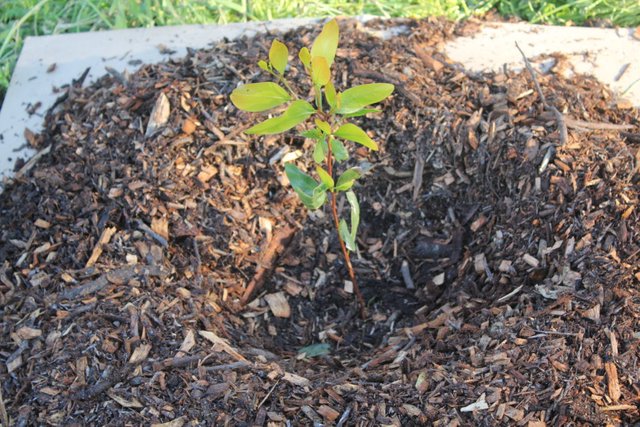
Pictured is a small Acacia Pycnantha
Long Term Species
Long Term species are trees that are planted with the intention of living indefinitely with the forest due to the beneficial functions, products and yields this tree provides.
Examples Include:
- Ice Cream Bean
- Elaeagnus
- Yangmei
- Moringa
- Tipuana Tipu
- Carob
- Mesquite
- Mimosa
- Indigofera
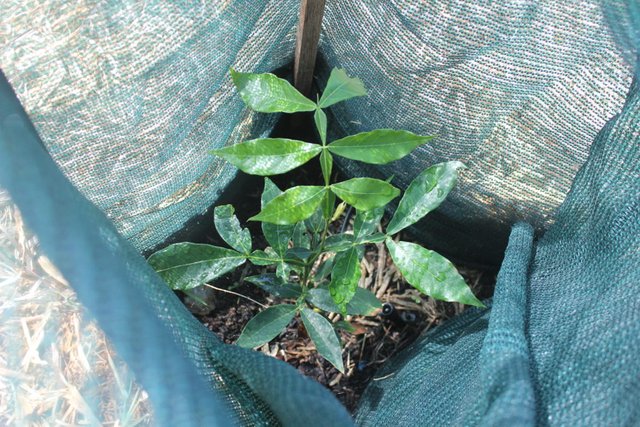
Pictured is a small Ice Cream Bean (Inga Edulis)
The goal here is to set in motion a sequence of events that will play out in time and space, evolving naturally into the complex and productive forest ecology we desire.
This is 4th dimensional thinking!
When designing our food forest, we must carefully arrange the various different elements in harmonious succession and think holistically about how each element interconnects and relates to the next.
Your design must include the placement of every productive tree and support species in an intentional way.
Aspects to take into account:
- The plant’s lifespan
- The plant’s intrinsic characteristics (height, width, root characteristics, etc.)
- The plant’s products
- The plant’s functions (to blanket weeds, provide microclimate etc.)
Many of the Support Species will be purely sacrificial, grown to serve a purpose, fulfill a need, and gradually returned to the system once this has been achieved.
Initiation of Forest
Forest Mass at Initiation:
- 90% Support Species
- 10% Productive Species
Recommended amount of Support Species per 1000 m2:
- Ground Cover – 100,000
- Short Term – 10,000
- Medium Term – 1,000
- Long Term – 100
Ground cover seeds are broadcast in such large numbers to suffocate less beneficial weeds. Over time, many of these species will either die naturally or be removed intentionally!
Climax of Forest
Forest Mass at Climax:
- 10% Support Species
- 90% Productive Species
Final number of Support Species per 1000 m2:
- Ground Cover – 0
- Short Term – 10
- Medium Term – 100
- Long Term – 10
Pruning Support Species Effectively -
If we have selected our Support Species correctly, hopefully we have selected fast growing species that coppice or pollard. Coppicing is the plant’s ability to grow back after severe pruning.
In most situations the perfect time to prune Support Species is when the level of rainfall is over the rate of evaporation.
When the evaporation is high it is preferable to maintain the Support Species as shade.
When the rainfall is over evaporation, we should prune the Support Species and use these as mulch for Productive trees. This will allow sunlight through and encourage the pruned branches to decompose.
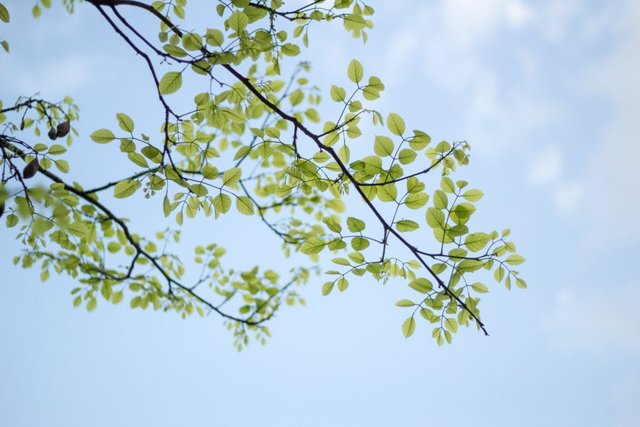
The correct height to prune these trees is at head height – where they will regrow as a shade umbrella in the Spring, creating a shade canopy which will help prevent unwanted weeds from growing!
In the process of pruning Nitrogen Fixing trees, the roots also self-prune, and die back, leaving behind nutrient rich deposits which decompose in the soil, attracting the roots of neighbouring trees and providing them with space and sustenance to grow!
Selecting Trees -
When selecting support species for your particular site, a great place to start would be to observe the native, pioneering and ‘weedy’ trees that grow local to your area. These trees are already accustomed to thrive in your environment.

Once you have identified the local, native and naturalized trees, follow up with some research and you’re ready to grow!!!
Planting -
The best time to plant Support Species is seasonally with rains.
Through doing so your young trees can establish a nice root system with little to no human input – saving you energy and putting less stress on the plant!
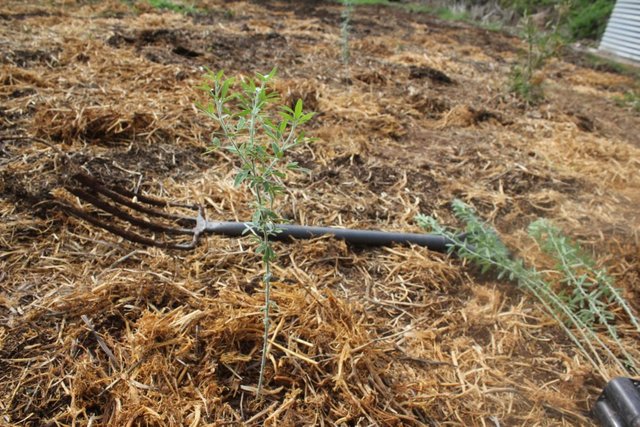
Pictured is a small Tagasaste - a nitrogen fixing, fodder tree
Good Luck and Keep Growing!
Original Article
http://anarkeden.com/supportspecies/
yesssss.......thank you!!!!!! please keep these posts coming @majinben!!!!!!!!!!!!!!!
Thank you for your awesome positivity and encouragement bro :) I really appreciate it
💚🌱👍
Thanks Jara 💚
Great article, lot of really good & important informations about soil & ground cover. Clear to read and beautiful pictures ;)
Wish you a good harvest ;) !!
Thanks I appreciate you reading